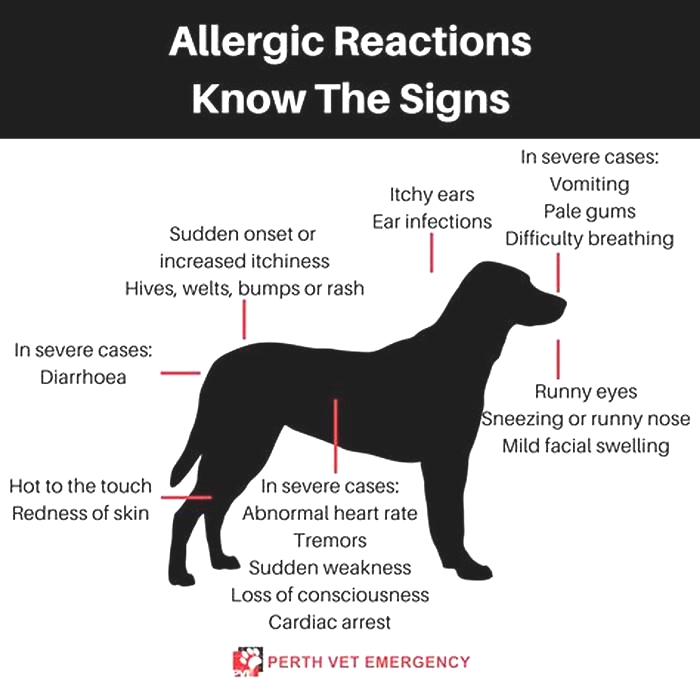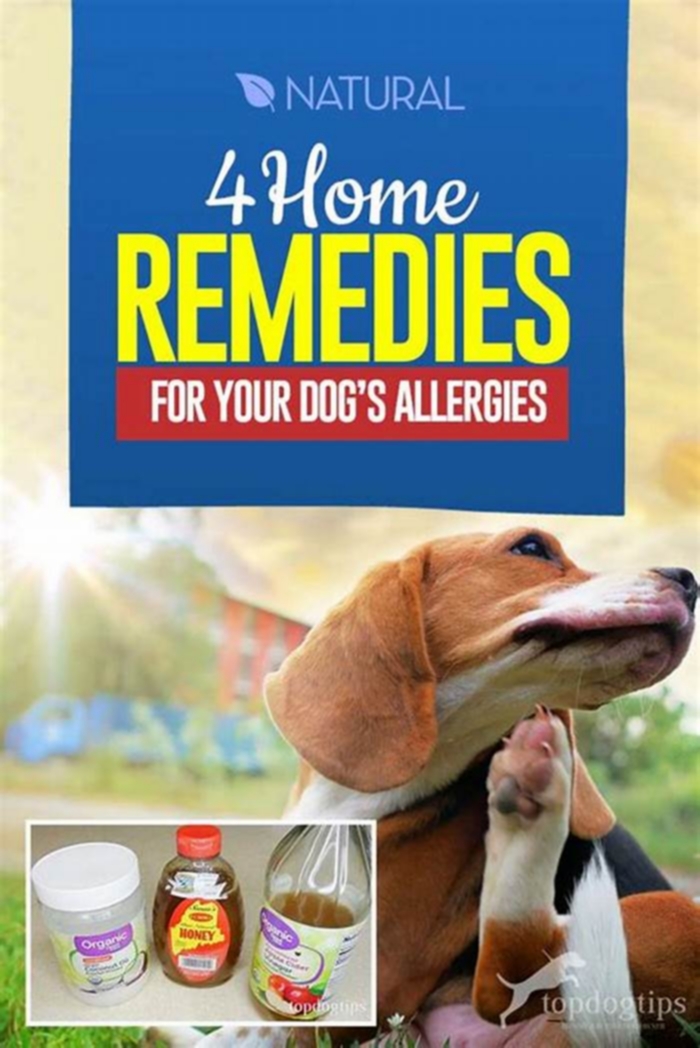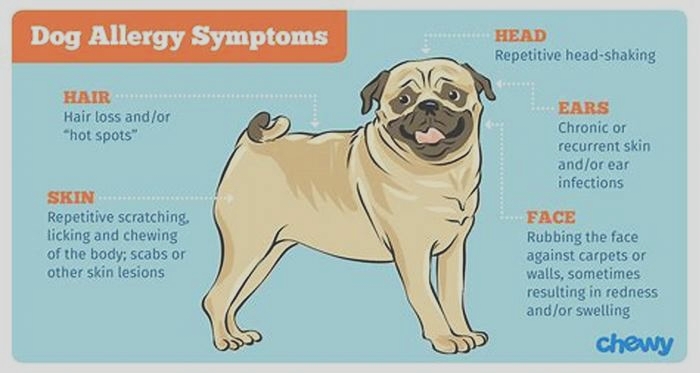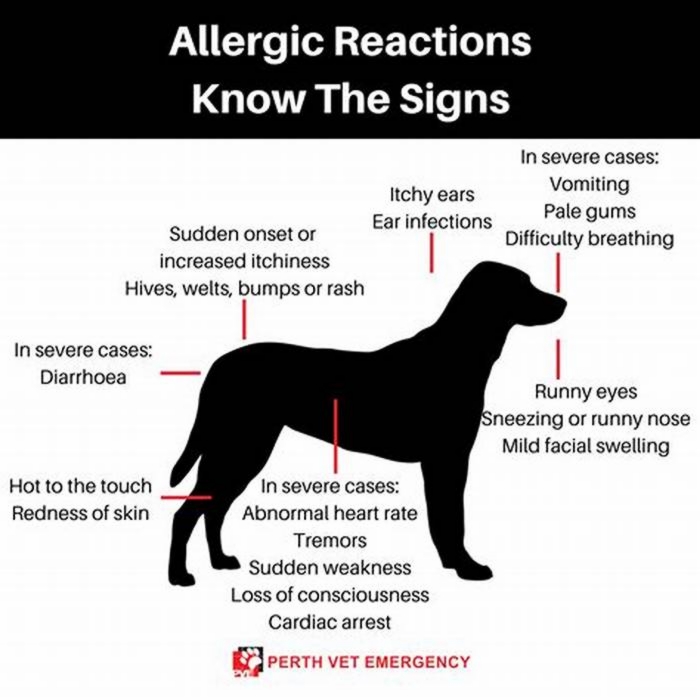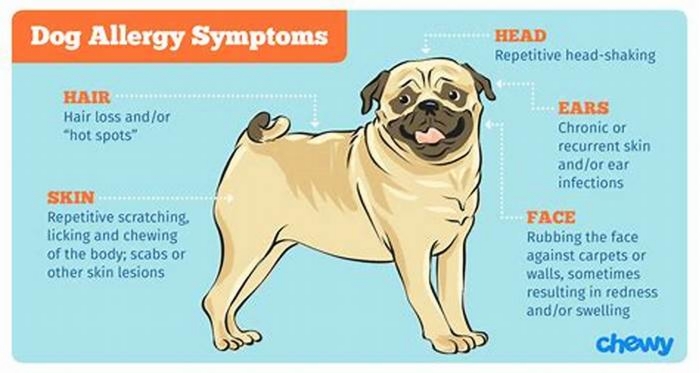How do dogs act when they have an allergic reaction
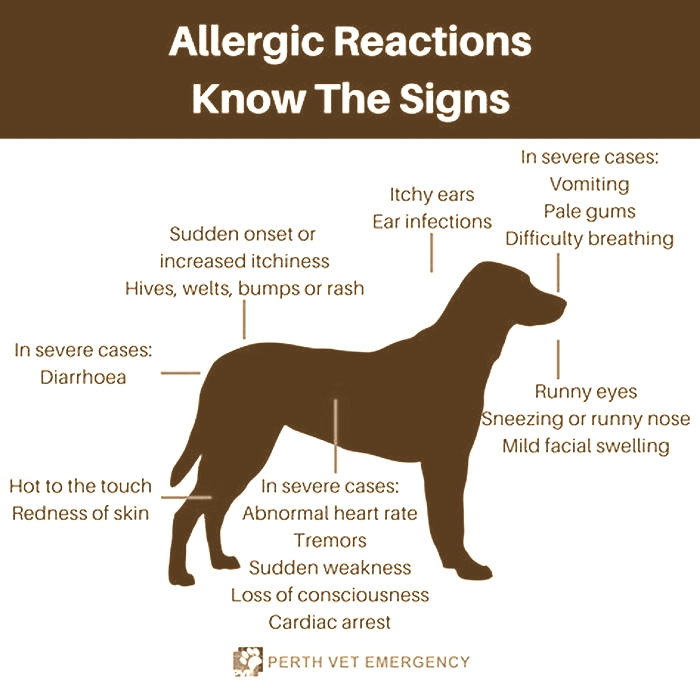
Dog Allergies: What You Need to Know
Allergies are quite common in dogs of all breeds and backgrounds. They occur when a dogs immune system has a hyper-reaction to a foreign substance, such as pollen, flea saliva, vaccines, spider bites, bee stings, or even certain foods that normally would cause little or no reaction in most dogs.
We suspect certain dog allergies, such as atopy or allergies to pollens and plants, are primarily hereditary in basis. Most of these dogs begin to show allergic signs between 1-3 years of age, often after they have previously been exposed to the underlying cause. While most allergies cant be cured, the goal is to manage them with treatments that can help relieve or control a dogs allergic symptoms.
Signs That Your Pet Might Have Dog Allergies
The signs of allergies vary depending on the type of allergic reaction a dog is experiencing and can vary from dog to dog. Most allergic signs in are dermatologic, which can range from itching and inflammation of the skin, feet and ears, to hives and possibly swelling of the face. Some allergic dogs can have clear watery eyes and nose, as well as sneezing.
Gastrointestinal signs can also occur such as vomiting and/or diarrhea with or without blood. In rarer cases, a much more severe and different allergic reaction called an anaphylactic reaction can occur. This is an immediate type of hypersensitivity and leads to a potentially life-threatening situation where a dog can acutely collapse due to shock and a severe drop in blood pressure.
Types Of Allergies Your Dog Might Have
There are several common types of allergies in dogs, including:
- Fleas: Reaction to the protein in flea saliva, not the actual fleas. Therefore, a dog with only one flea can still have an extensive systemic allergic reaction due to their bodys reaction to just that one fleas saliva.
- Canine Atopic Dermatitis: Also known as atopy or atopic dermatitis (AD), this is a very common canine allergy. This is usually an inherited predisposition to develop allergic symptoms after exposure to relatively common substances or allergens in the air such as pollens, grasses, weeds, molds, or fungi. Common signs of atopy are itching and inflammation in a dog often seen in the underarms, groin, face and feet. Atopy is often seasonal.
- Food Allergies: Allergies to food can manifest with a chronic skin condition such as flaky, itching skin, chronic licking or biting of the paws, or chronic ear infections (often with secondary opportunistic bacterial or yeast infections). Dogs can develop allergies to a food or substance over a period of time, even if they may have had no previous issues with that food substance or protein.
- Contact Allergies: Contact allergies are found when a dog has direct contact with a caustic surface or chemical, causing severe irritation to the skin. Household cleaners, carpet cleaners, fertilizers, topical medication, and essential oils may all potentially cause a contact allergy.
- Bacterial Hypersensitivity: Bacterial hypersensitivity occurs when a dogs immune system overreacts to the normal bacterial flora on their skin. This often occurs when other health conditions are present, such as hypothyroidism, inhalant allergy, and/or flea allergy.
Diagnosis And Treatment of Your Dogs Allergies
The best method of controlling allergies is to know what the allergen is and to avoid it or control it. Your veterinarian can perform an extensive examination with history to try to help determine the most likely cause and formulate a practical treatment plan. The gold standard for diagnosing allergies in dogs is immunotherapy or allergy testing to determine the actual cause of the allergic response and to tailor an allergen-specific immunotherapy (ASIT).
There are several options for treating your dogs allergies, including:
- Flea Prevention: Flea prevention is obvious, relatively easy, and will help dogs who suffer from allergies to fleas. Flea eradication through an extensive anti-parasitic protocol may be necessary to improve the allergy sufferer.
- Antihistamines: This treatment is generally inexpensive and safe with few side effects, but different types can have variable effects and dont work on all dogs.
- Medications: Cortisone products have been commonly used in the past with good effects on allergy sufferers, but these types of medications are not without side effects, so they need to be used judiciously and only for shorter periods of time. Newer medications such as cyclosporines (Atopica), Apoquel (an immunomodulatory), and Cytopoint (an immunotherapeutic) are currently being used extensively by clinicians with good results to minimalize the severe itching response the dog gets from allergies.
- Dietary Changes/Hypoallergenic Diets: Dairy, beef, and wheat can be responsible for up to 80% of food allergies in dogs. Hypoallergenic diets utilize one novel protein (or only one new protein in a diet) as the protein source. Most pets with food allergies respond well when switched to a store-bought hypoallergenic diet, but occasionally an animal suffers from such extreme allergies that a homemade diet is the only option. In this case, the diet should be customized with the aid of a veterinarian, veterinary dermatologist, or veterinary nutritionist.
- Environmental and External Aids: Air purifiers can help reduce certain molds. Dust and pollens are best controlled by using an air cleaner with a high-efficiency particulate air (HEPA) filter. Air conditioning can also reduce circulating amounts of airborne allergens because windows are then kept closed.
- Medicated Baths and Supplements: Many medicated dog shampoos have compounds in them that are aimed at soothing the injured skin and skin barrier and calming inflammation. In addition, frequent bathing (weekly to every other week) can remove allergens from the coat, which may contribute to skin allergy flare-ups. These shampoos are often prescribed by your veterinarian, and directions for use should always be read completely and followed explicitly.
- Supplements: Omega-3 and Omega-6 essential fatty acid supplements can be considered by your veterinarian. These fatty acids are naturally anti-inflammatory and anti-oxidative agents.
- Antibiotics and Antifungal Medications: Antibiotics are frequently needed to treat secondary skin infections. Anti-fungal medications are frequently needed to treat secondary yeast infections.
Each possible allergy treatment has its advantages and drawbacks. Finding the source of your dogs allergy and discussing a specific treatment plan with your veterinarian is recommended.
7 Signs of an Allergic Reaction in Dogs
Runny snout, itchy eyeswhats going on with your poor pooch? Well, just like us humans, allergies can plague dogs with uncomfortable symptoms. If you see your pet suffering from what looks like severe allergic reactions or long-term seasonal allergies, theres a strong chance youre right.
Its important to speak to your primary care vet if you think your dog is dealing with allergies. In serious cases, that well discuss in this blog, VEG is here with emergency treatment for your dog.
Below, you can read up on the different types of canine allergies and what to do in case you notice symptoms. Addressing this problem sooner rather than later will ease your buddys allergy blues.
TYPES OF DOG ALLERGIES
Woe is your doggo. Somethings got your furry friend feeling down and you suspect allergies. But youre not sure if its the weather, something in the home, or another reason altogether. VEG is here to help! Check out this list of the four most common types of allergies in dogs. Each has its own causes and treatments, but understanding the categories can make a big difference in how well you recognize your dogs allergic reaction.
1. Food allergies
Your dog is usually quite the foodie! But now your pal has a sick stomach after eating certain types of food. This could be a food allergy, and the most common symptoms youll see is vomiting or diarrhea. However, food allergies may also present as skin conditions or fur loss, so be on the lookout for skin and hair problems.
2. Skin allergies
Yeesh, your pup usually does well in the great outdoors, but something is wrong. Skin allergies! Make sure your pet is on regular flea/tick preventative, which you can get through your primary veterinarian. We mention this because skin allergies in dogs can often be caused by exposure to fleas or ticks. Its also possible that plants or yard treatment chemicals are irritating your dogs skin. A skin allergy will present as:
- Hives (small, raised red bumps all over the skin)
- Itchiness
- Redness
A skin allergy for your dog can be caused by other things too. Have you tried a new detergent recently? New rug cleaner? Any of these could be the culprit, but you can likely rule them out quickly if you remove the suspected irritant from any contact with your dog.
3. Seasonal allergies
Its breezy and your dog is sneezy. If you notice your dog getting sick (ear infections, licking or chewing at their feet, sneezing, etc.) around the same time every year or notice him sneezing more often when hes been outside all day, theres a chance its seasonal allergies. Check out all of the allergy types in this blog, because its important to rule out other factors to make sure this is the case.
4. Acute allergies
Dogs who have sudden allergic reactions to irritants have acute allergies. Most commonly caused by pesky insect bites or stings, acute allergies may have other causes as well. An acute allergy will show as:
- Facial swelling
- Vomiting
- Trouble breathing and collapse in severe cases, this is an anaphylaxis reaction
Acute allergies may need immediate emergency vet treatment. Call or come in to your nearest VEG if you notice any of these signs. Our ERs are open 24/7, so call anytime and speak with a doctor who will answer your questions.
SYMPTOMS OF ALLERGIC REACTIONS IN DOGS
Now, were sure youre itchin to know about the seven allergy symptoms in dogs! Here are the most common reactions and what to do about them:
1. Itchiness and hives
Is your dog scratching a lot or have red areas of skin? These reactions are common in all types of allergies. If scratching and hives are the only symptoms you notice, you can wait a day or two before scheduling a GP vet visit. But if theyre coupled with any other symptoms, get to VEG soon. You may be tempted to give your dog allergy medication because theyre having a rough go of it, but call VEG for advice before doing so.
2. Diarrhea, vomiting, and upset stomach
If your dog has diarrhea or is vomiting, visit Veterinary Emergency Group as soon as possible so your dog can get the care he needs right away. Caution: this may be a sign of an early anaphylactic reaction.
3. Itchy ears
Though totally annoying for your dog, itchy ears usually arent a sign of anything life-threatening, and can wait for a primary care veterinary visit. However, if your pet is increasingly uncomfortable and/or starts to have any trouble walking, or your dogs head is tilted to one side, get to VEG asap for treatment.
4. Sneezing and runny nose
Your pups achoos are totes adorbs, but beware, when sneezing and/or runny nose is accompanied by fever or by any other symptoms on this list, your dog requires immediate veterinary intervention. They may be signs of seasonal allergies and could be very benign, but its important for your vet to check for the cause of your dogs allergic reaction.
5. Runny eyes
Watery, runny eyes need to be checked out by your primary care vet, even if you think theyre just due to an allergic reaction. This can also be a symptom of upper respiratory infection. Another reason for runny eyes is if there is damage to the eye itself (scratch or ulceration of the cornea). Rule out these potential issues by taking your dog to your vet to find out the real cause.
6. Frequent licking or chewing on skin
This symptom of a dog allergy kind of hides in plain sight! If your dog chews or licks his skinespecially his feetfrequently or seemingly nonstop, this is a sign hes dealing with some form of allergies. Who knew?
The problem could come from exposure to irritants in the backyard or on walks, but it may also be a symptom of food allergies in your dog. Although not an emergency, youll need to go to your primary care vet to determine how to treat it and what the underlying cause might be.
7. Swollen face
Take heed, a swollen face or snout is a sign that your dog may be headed into anaphylactic shock. Although dogs with a swollen face dont always suffer anaphylaxis, it is common. We recommend bringing your dog in to be seen by an emergency vet at VEG if there is any facial swelling. Well triage your dog immediately, and provide treatment to prevent it from getting worse. If theres enough swelling going on, it could lead to other signs such as trouble breathing, so dont wait it out.
SEE A VET FOR ALLERGIC REACTIONS IN DOGS
Now that you know a little bit more about what to expect from your dogs allergic reactions, you can determine whether or not its an emergency or if you can wait to schedule a regular vet appointment.
The veterinarians at VEG are here and ready to help with your dogs allergic reactions or any emergency your pet may be experiencing. Were open 24/7 and youll see a doctor right away. Best of all, you never have to leave your dogs side. Have questions about VEG? We have answers!

